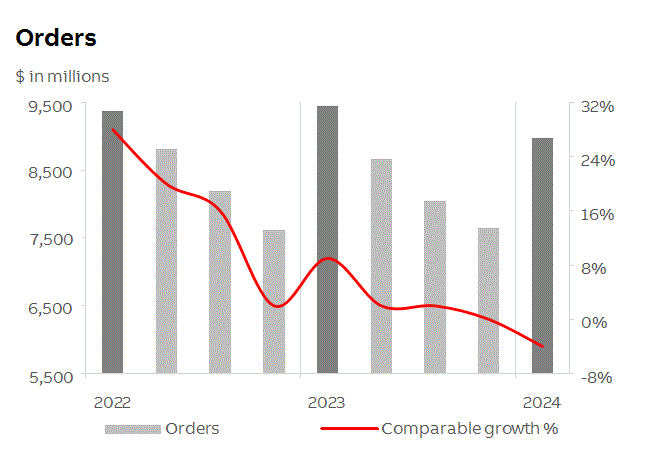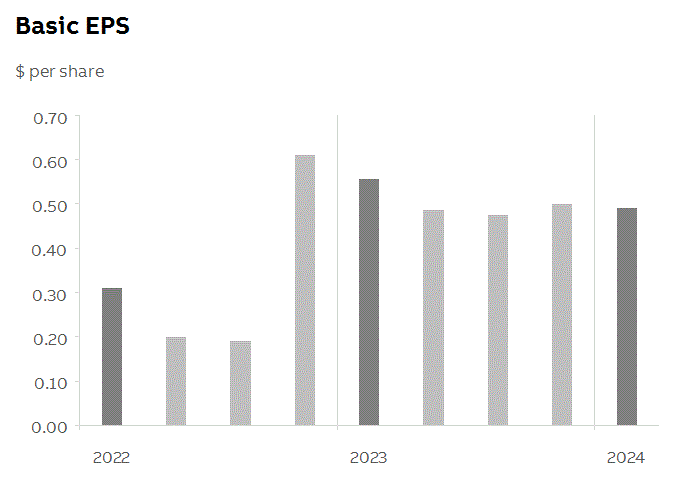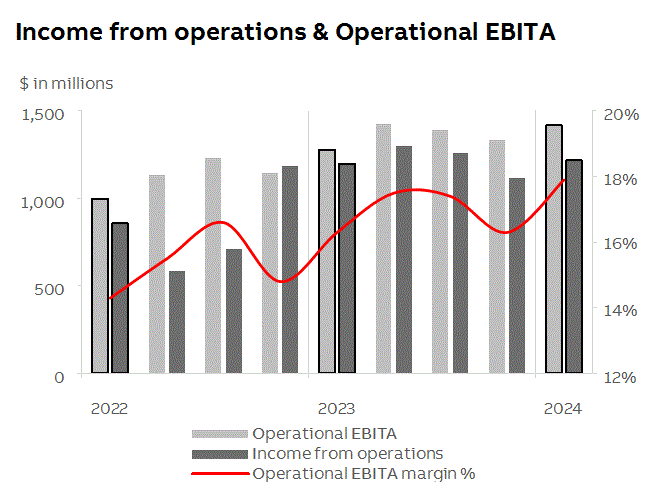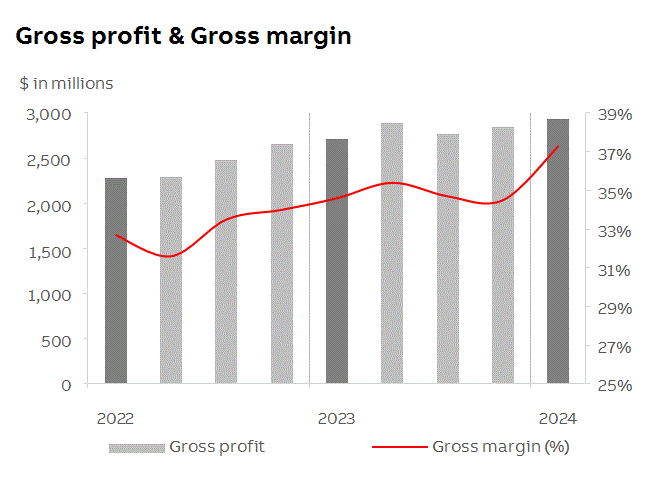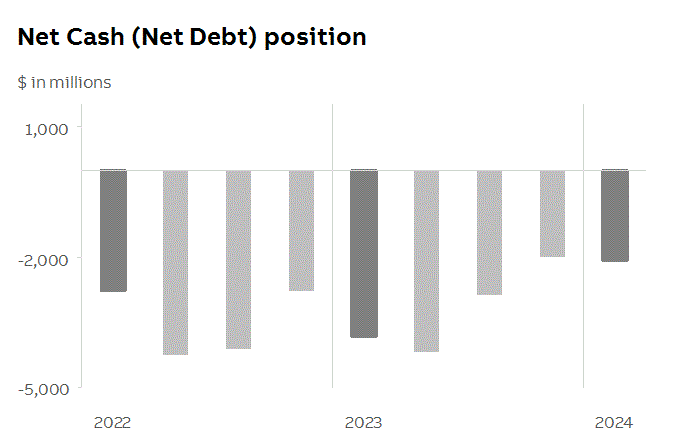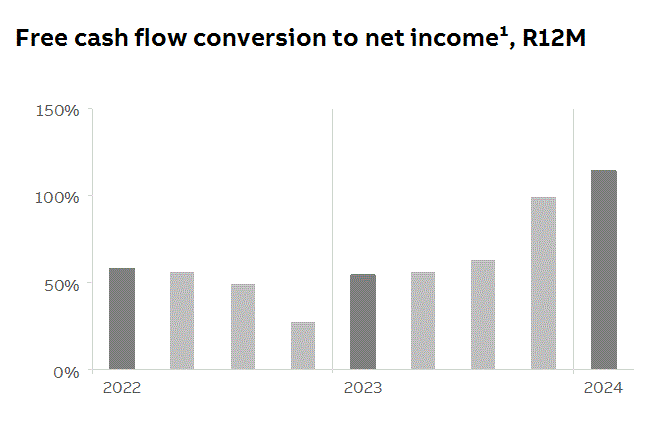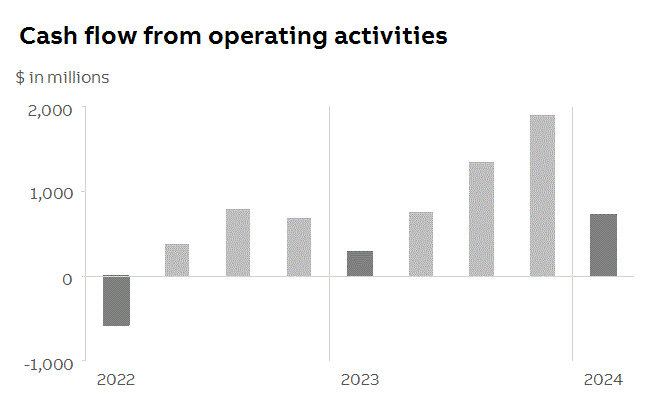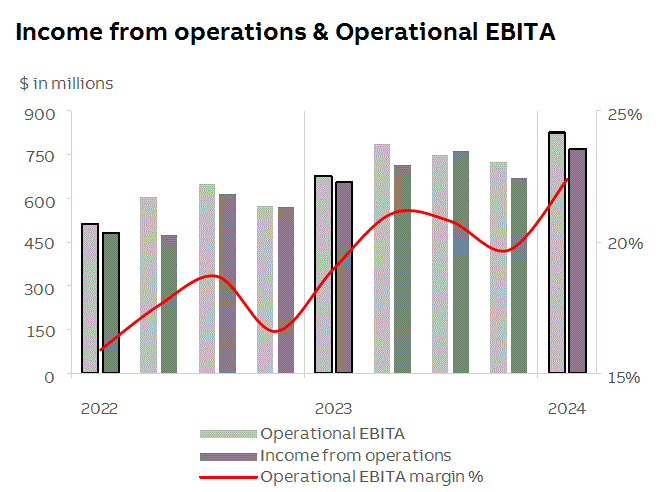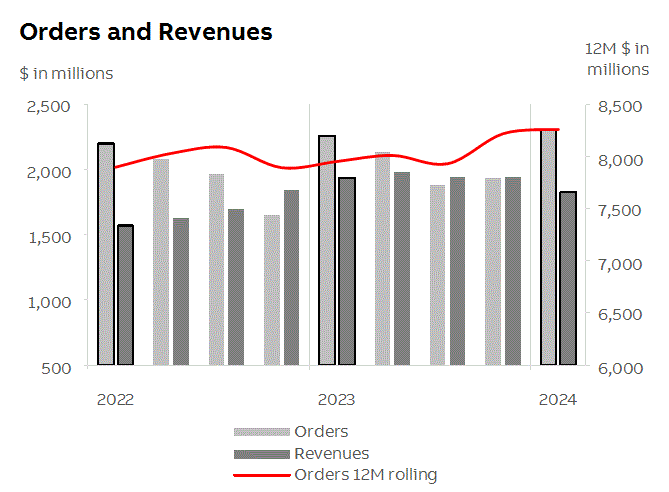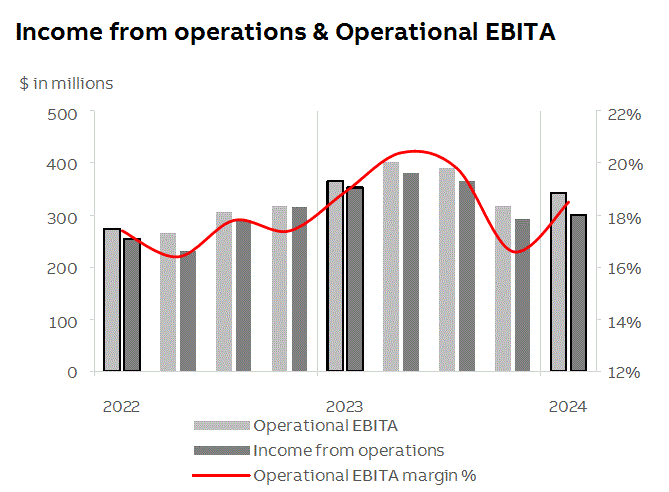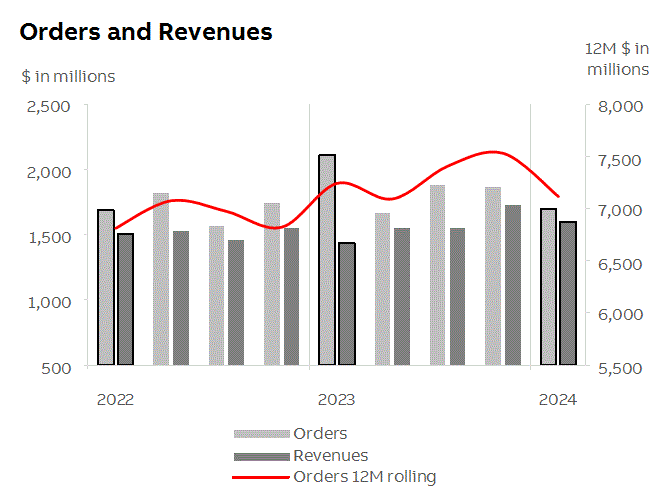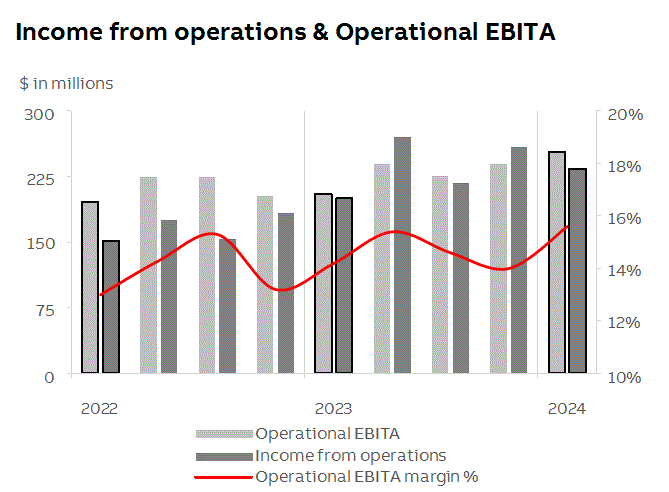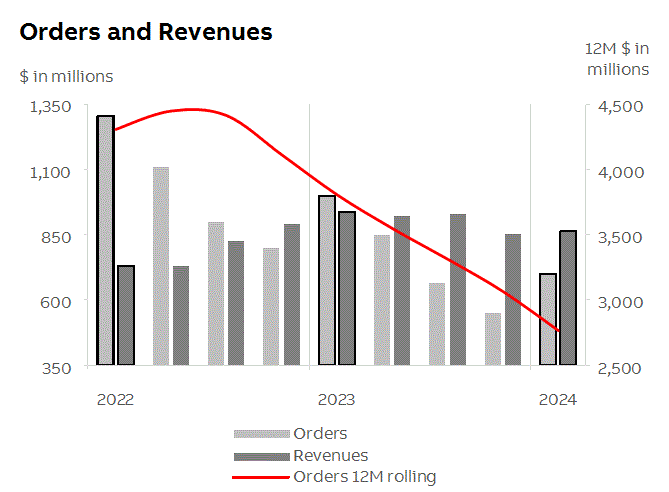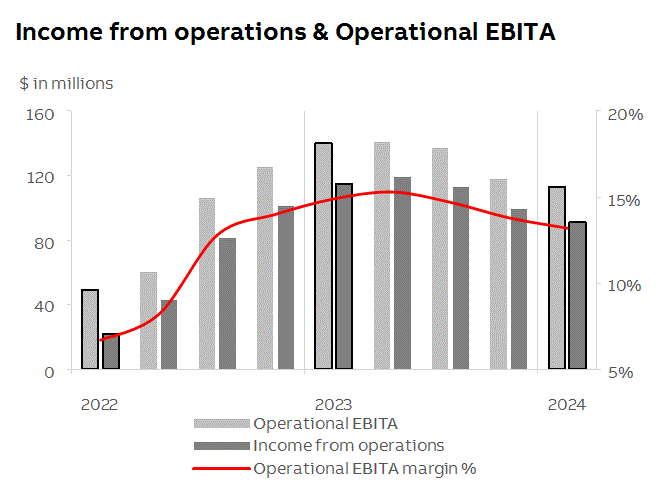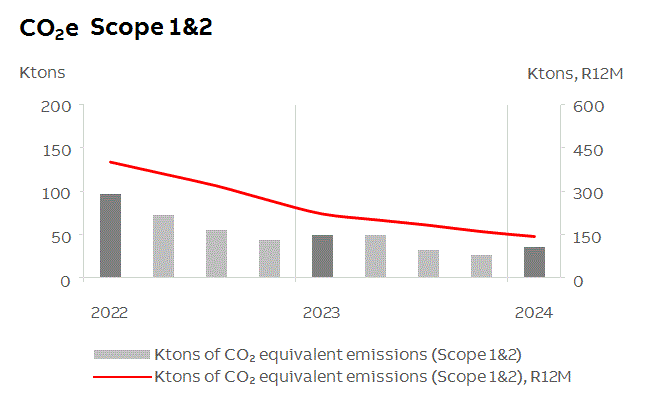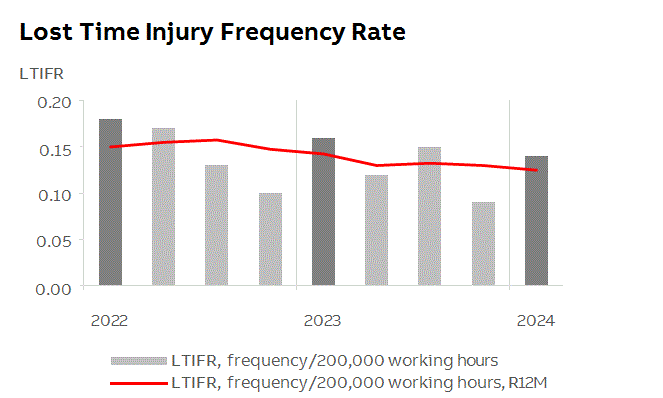24
Q1 2024 FINANCIAL INFORMATION
─
Note 15
Operating segment data
The Chief Operating Decision Maker (CODM) is the Chief
Executive Officer. The CODM
allocates resources to and assesses the performance
of each operating
segment using the information outlined below. The
Company is organized into the following segments, based
on products and services: Electrification, Motion,
Process Automation and Robotics & Discrete Automation. The remaining
operations of the Company are included in
Corporate and Other.
A description of the types of products and services
provided by each reportable segment is as follows:
●
manufactures and sells electrical products and solutions
which are designed to provide safe, smart and
sustainable electrical flow from
the substation to the socket. The portfolio of increasingly digital and
connected solutions includes renewable power
solutions, modular substation
packages, distribution automation products, switchboards and
panelboards, switchgear, UPS solutions,
circuit breakers, measuring and sensing
devices, control products, wiring accessories, enclosures and cabling
systems and intelligent home and building solutions,
designed to integrate and
automate lighting, heating, ventilation, security and data communication
networks.
The products and services are currently delivered through five
operating Divisions: Distribution Solutions, Smart Power,
Smart Buildings, Installation Products and Service, as
well as, prior to its sale in July 2023, the
Power Conversion Division.
●
designs, manufactures, and sells drives, motors, generators
and traction converters that are driving the low-carbon future
for industries, cities,
infrastructure and transportation. These products, digital technology
and related services enable industrial customers
to increase energy efficiency,
improve safety and reliability, and achieve
precise control of their processes. Building on over 140
years of cumulative experience in electric
powertrains, Motion combines domain expertise and technology
to deliver the optimum solution for a wide range of applications
in all industrial
segments. In addition, Motion, along with its partners,
has a leading global service presence. These products and services
are delivered through seven
operating Divisions: Large Motors and Generators, IEC LV
Motors, NEMA Motors, Drive Products, System Drives,
Service and Traction.
●
offers a broad range of industry-specific,
integrated automation, electrification and digital solutions,
as well as lifecycle services for
the process,
hybrid and marine industries. The product portfolio includes
control technologies, industrial software, advanced
analytics, sensing and
measurement technology, and marine
propulsion systems. In addition,
Process Automation offers a comprehensive range
of services,
from repair to
advanced digital capabilities such as remote monitoring, preventive
maintenance, asset performance management, emission
monitoring and
cybersecurity.
The products, systems and services are delivered through four operating
Divisions: Energy Industries, Process Industries, Marine &
Ports and Measurement & Analytics.
●
Robotics & Discrete Automation:
delivers its products, solutions and services
through two operating Divisions. Robotics provides industrial and
collaborative robots, autonomous mobile robotics, mapping and
navigation solutions, robotic solutions, field services,
spare parts and digital services.
Machine Automation specializes in automation solutions based
on its programmable logic controllers (PLC), industrial
PCs (IPC), servo motion,
transport systems and machine vision. Both divisions offer
software across the entire life cycle, including
engineering and simulation software as well as
a comprehensive range of digital solutions.
Corporate and Other:
Corporate includes headquarter costs, the Company’s
corporate real estate activities and Corporate Treasury
while Other includes the E-
mobility operating segment, other non-core operating activities as
well as the operating activities of certain divested businesses.
The primary measure of profitability on which the operating segments
are evaluated is Operational EBITA, which
represents income from operations excluding:
●
amortization expense on intangibles arising upon acquisition (acquisition
-related amortization),
●
restructuring, related and implementation costs,
●
changes in the amount recorded for obligations related to divested
businesses occurring after the divestment date (changes
in obligations related to
divested businesses),
●
gains and losses from sale of businesses (including fair value adjustment
on assets and liabilities held for sale,
if any),
●
acquisition- and divestment-related expenses and integration costs,
●
certain other non-operational items, as well as
●
foreign exchange/commodity timing differences in income
from operations consisting of: (a) unrealized gains
and losses on derivatives (foreign
exchange, commodities, embedded derivatives), (b) realized
gains and losses on derivatives where the underlying hedged
transaction has not yet been
realized, and (c) unrealized foreign exchange movements on receivables/payables
(and related assets/liabilities).
Certain other non-operational items generally includes certain regulatory,
compliance and legal costs, certain asset write downs/impairments
and certain other fair
value changes, as well as other items which are determined
by management on a case-by-case
basis.
The CODM primarily reviews the results of each segment on
a basis that is before the elimination of profits
made on inventory sales between segments. Segment
results below are presented before these eliminations, with a total deduction
for intersegment profits to arrive at the Company’s
consolidated Operational EBITA.
Intersegment sales and transfers are accounted for as if the sales
and transfers were to third parties, at current market prices.
The following tables present disaggregated segment revenues from
contracts with customers, Operational EBITA,
and the reconciliations of consolidated
Operational EBITA to Income from continuing
operations before taxes for the three months ended March
31, 2024 and 2023, as well as total assets at March 31,
2024, and December 31, 2023.









